All products featured are independently chosen by us. However, SoundGuys may receive a commission on orders placed through its retail links. See our ethics statement.
Apple AirPods Pro vs Apple AirPods (2nd generation)
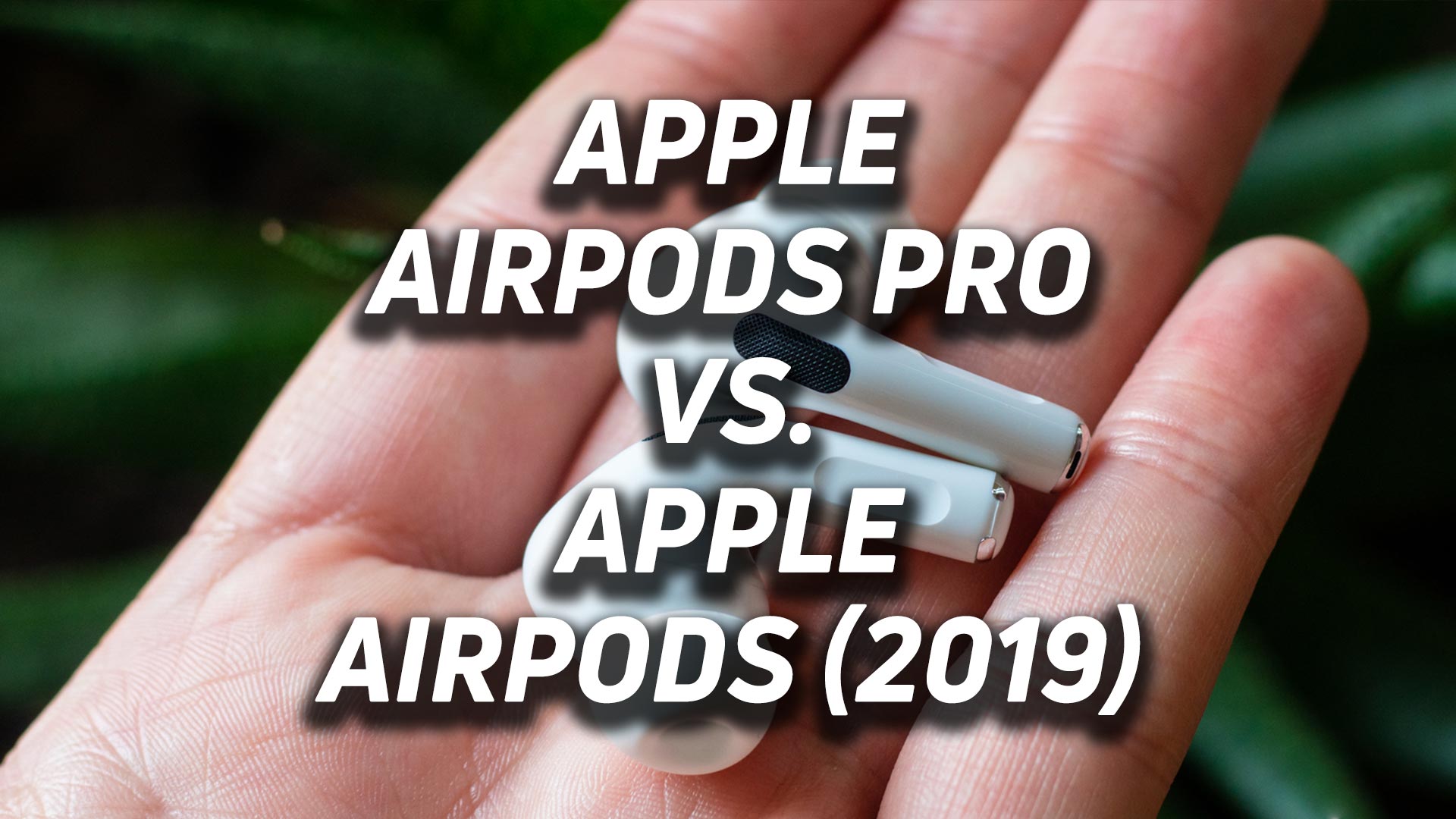
The illustrious Apple AirPods Pro seems to one-up the AirPods (2nd generation) in every way including a better fit, active noise-cancelling, improved battery, and more. While it may seem like an effortless win for the AirPods Pro, there is one thing holding consumers back: the $249 price. Let’s find out if the AirPods Pro is better than the AirPods.
New product alert: See our Apple AirPods Pro (2nd generation) and Apple AirPods (3rd generation) reviews, as well as our new Apple AirPods Pro (2nd gen) vs. AirPods (3rd gen) comparison.
Editor’s note: this article was updated on March 22, 2022, to update the microphone samples and information about the microphones.
Do the AirPods (2nd generation) or AirPods Pro have a better fit?
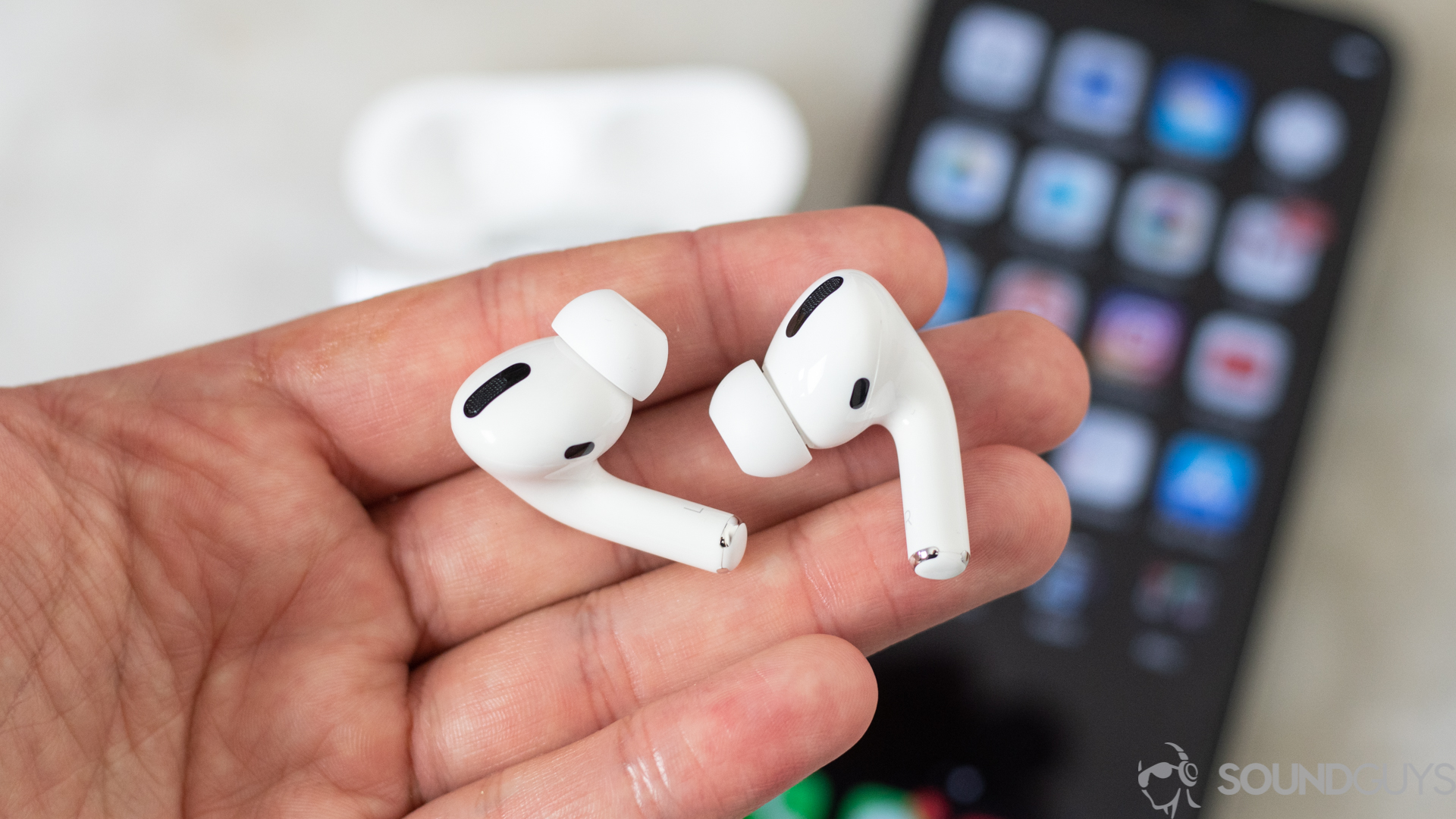
The new AirPods Pro sports dedicated nozzles, which is exactly what we’ve been begging for since the original AirPods release. Sure, the wireless earpods still look funky, but we promise, the redesign dramatically improves sound quality. The AirPods (2nd generation) doesn’t seal to the ear. While this can be beneficial in moments when you need to hear your surroundings, it severely degrades audio quality. External noise drowns out the detail in music because our brains have limited bandwidth for processing stimuli (see: auditory masking).
You might like: Prevent pain and infection when wearing earbuds
This same updated design enables another new feature: active noise canceling. The Apple AirPods Pro can actively cancel noise, something we haven’t yet seen from previous Apple earbuds. This is a huge leap forward for Apple as it keeps listeners safe by protecting their hearing. How? Well, you’re less likely to increase the loudness of your music because the ANC technology is doing plenty of heavy lifting to hush your surroundings. When using non-noise canceling earbuds you’re more inclined to drown out background noise by increasing music loudness. Exposing your ears to 85dB or louder for long periods of time puts you at risk for noise-induced hearing loss.
The AirPods Pro is more durable than its predecessor and received an IPX4 water-resistant rating. While plenty of gym-goers use older AirPods to exercise, water damage isn’t covered by the warranty. If you happen to short-circuit the old AirPods due to sweat, you’re out of luck, which isn’t the case with the Pro version. The new fit also helps when exercising because the buds are more likely to stay in place.
(Click the image to expand.)
Related: The best wireless workout earbuds
Both earbuds feature onboard controls but the operation is slightly different. The AirPods features touch controls that require you to tap the outside of either housing, and the AirPods Pro features an indentation on either stem. The latter uses force sensors to register short and long squeezes against the stem. No matter which AirPods you have, functionality can be customized by entering your iPhone’s Bluetooth settings and selecting the “i” icon next to the desired device. From there, follow the appropriate prompts to control what each tap or press commands.
Both AirPods models support automatic ear detection whereby removing one automatically pauses playback; reinserting the AirPods resumes playback. This function isn’t supported by Android phones, however, and can be toggled off via an iOS device’s settings.
(Click the image to expand.)
The AirPods Pro charging case is wireless by default
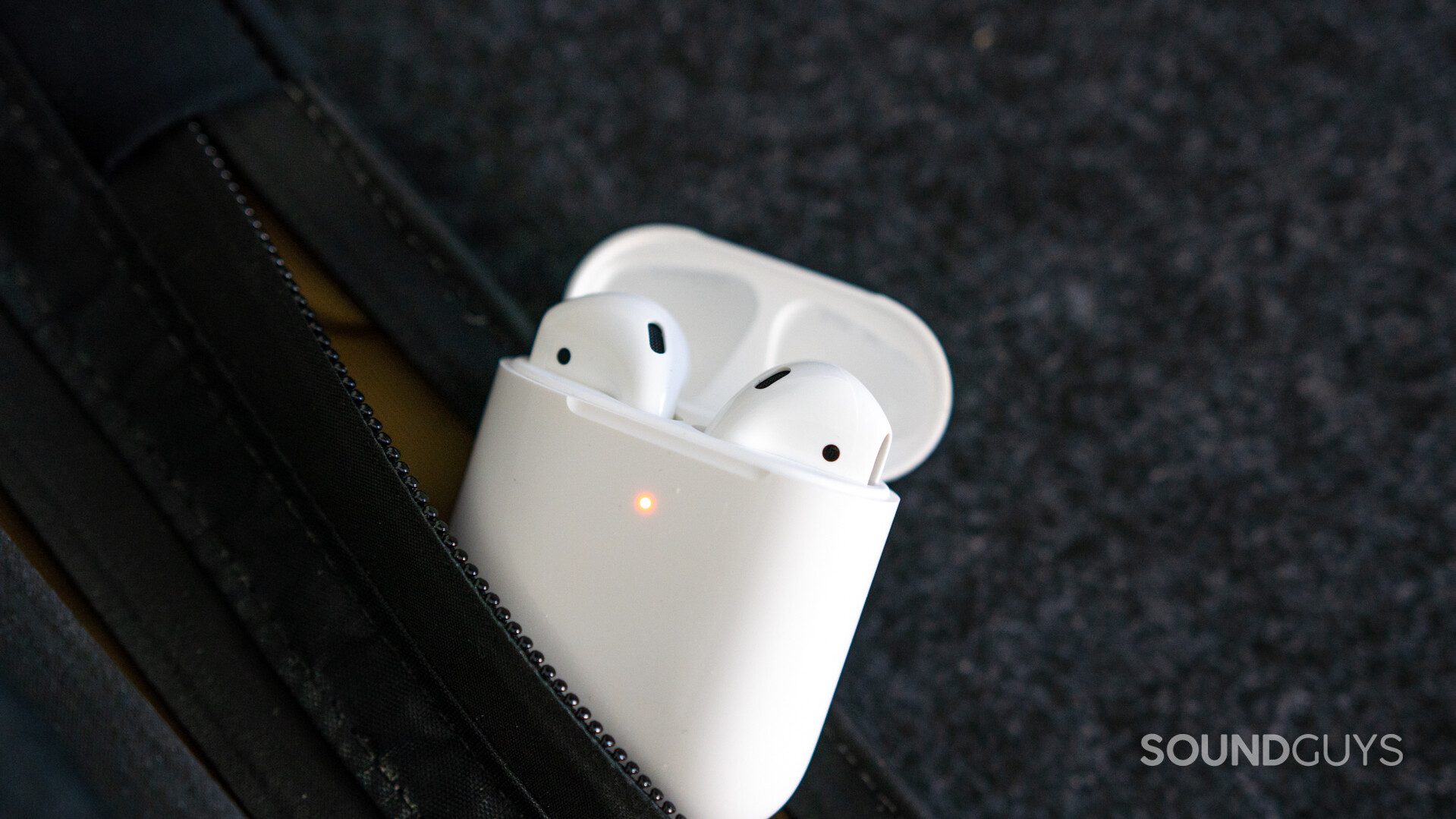
Unlike the AirPods (2nd generation) which has a two-tiered purchasing option, a standard or Qi wireless charging case, the Apple AirPods Pro includes a Qi wireless-compatible charging case, which is now Magsafe-compatible too. While this could be seen as a nuisance by listeners who don’t want or need wireless charging capabilities, it falls more in line with the company’s prioritization of simplicity.
We’re happy to see Apple combine the wireless charging case with the AirPods Pro, rather than up charging customers for it like what happened with the AirPods (2nd generation).
Both the AirPods (2nd generation) and AirPods Pro have great software features
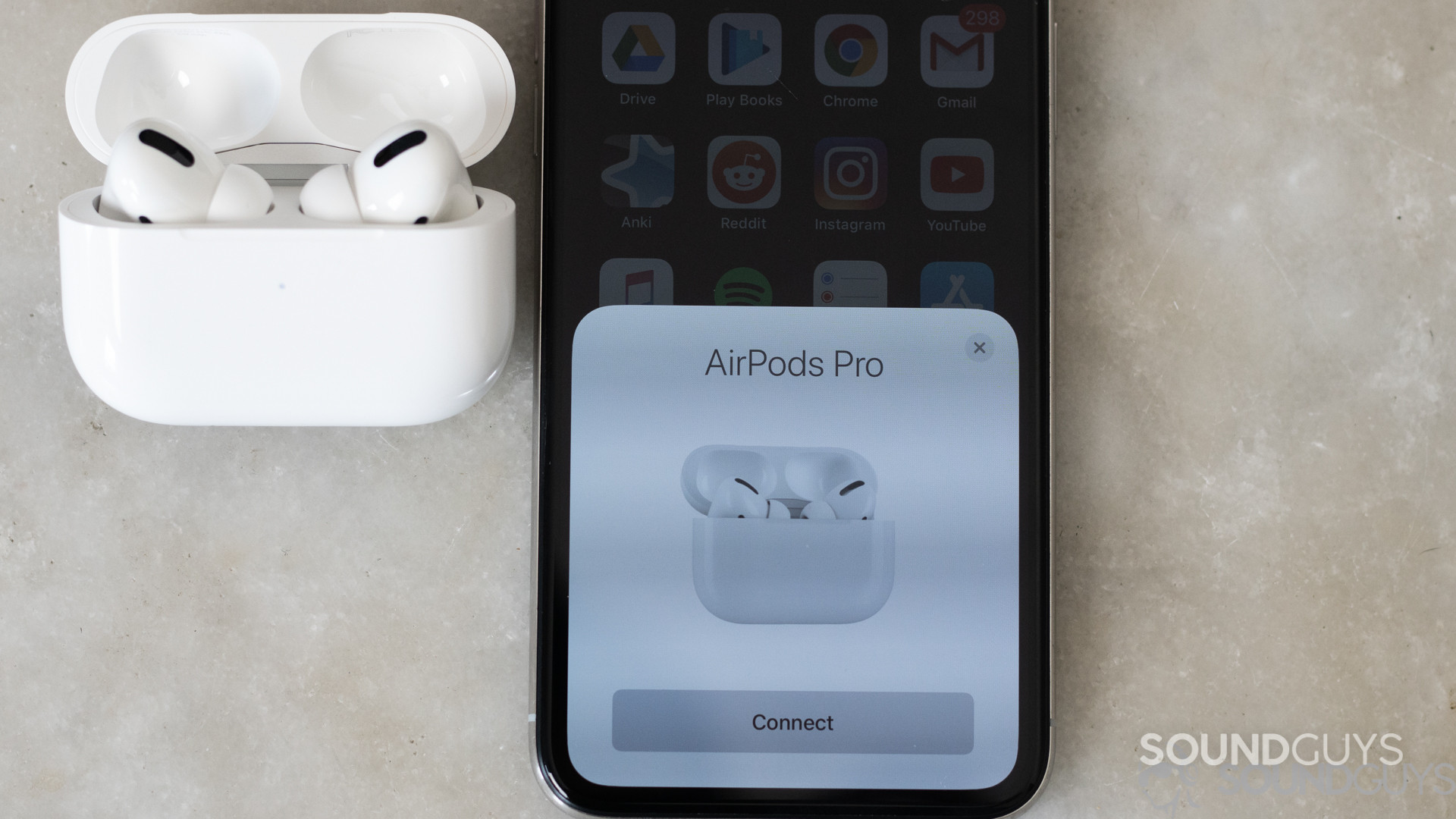
The iOS 14 update improved both the AirPods and the AirPods Pro: iOS device owners can use automatic device switching as long as all devices are under the same iCloud account. iOS 14 also includes accessibility settings for the AirPods (2nd generation) and AirPods Pro, and these include a customizable audio profile, battery status checks, Find My AirPods, audio profile presets, volume safety monitoring, and more.
Related: What makes a good set of in-ears?
Battery status notifications are now available with both the AirPods and AirPods Pro as well as a new battery optimization feature. The battery optimization feature works by learning your daily charging routine and refraining from charging past 80% until necessary. This helps preserve the long-term health of your true wireless earbuds’ battery. You can enjoy spatial audio with Dolby Atmos via either pair of earbuds, but you’ll need the AirPods Pro for head tracking too.
What Bluetooth codecs do the AirPods (2nd generation) and AirPods Pro support?
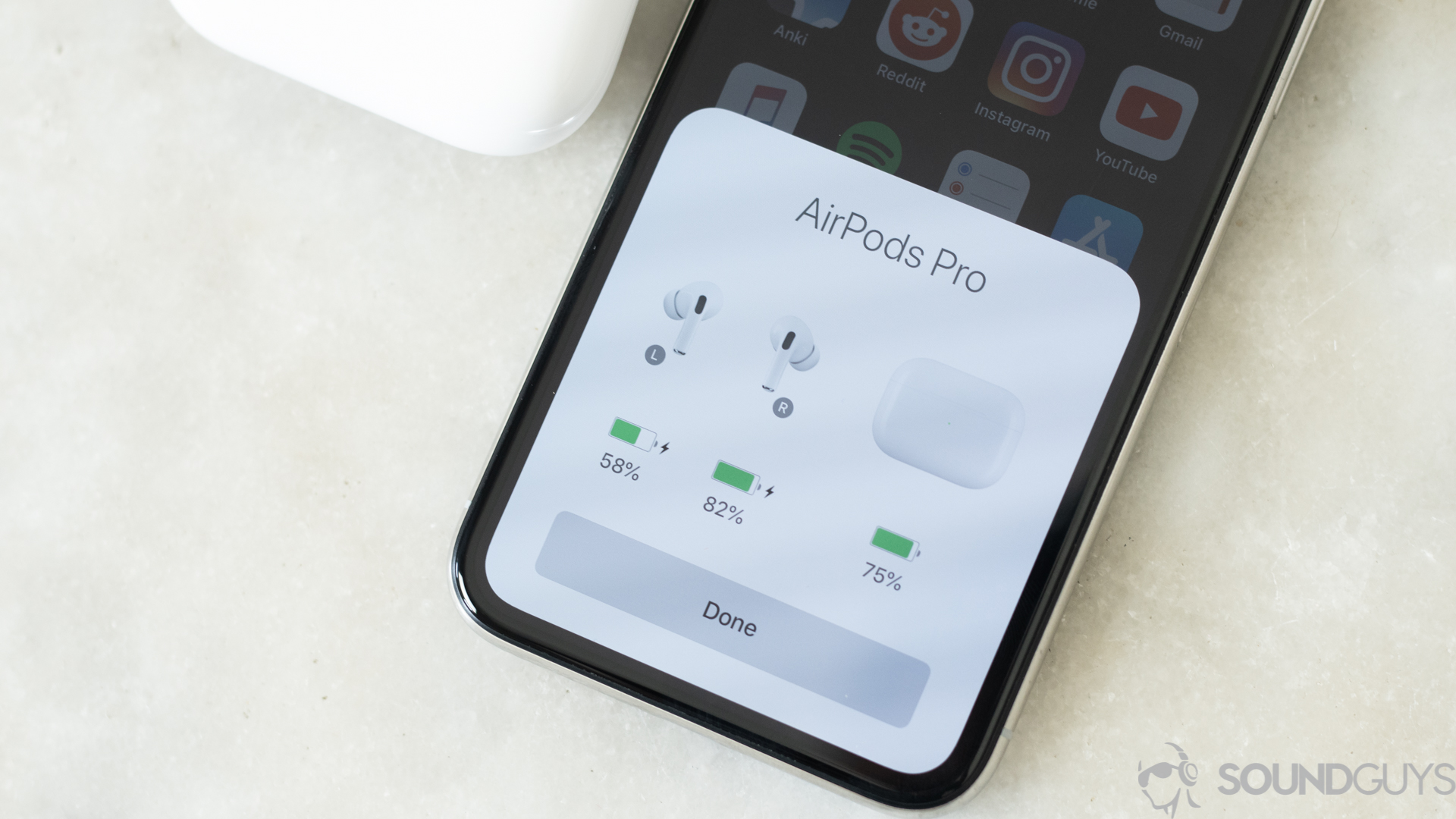
Now, let’s look at Bluetooth codec support. Since both are Apple products, both support high-quality streaming over the AAC codec and have an integrated H1 chip, which facilitates hands-free Siri access, streamlined autoconnect and usage across iOS devices, as well as energy efficiency. H1 chip benefits are exclusive to iOS devices. Android users still reap the perks of Bluetooth 5.0 from either pair of wireless earbuds though.
Become an expert: Understanding Bluetooth codecs
Connection stability within the Apple ecosystem is unparalleled. Unfortunately, the same can’t be said when using the AirPods or AirPods Pro with an Android device. Android has yet to figure out a universal way of handling AAC streaming across devices, making its performance dubious at best. This means some Android owners may have better luck forcing the SBC codec.
Does the AirPods (2nd gen) or AirPods Pro have better battery life?
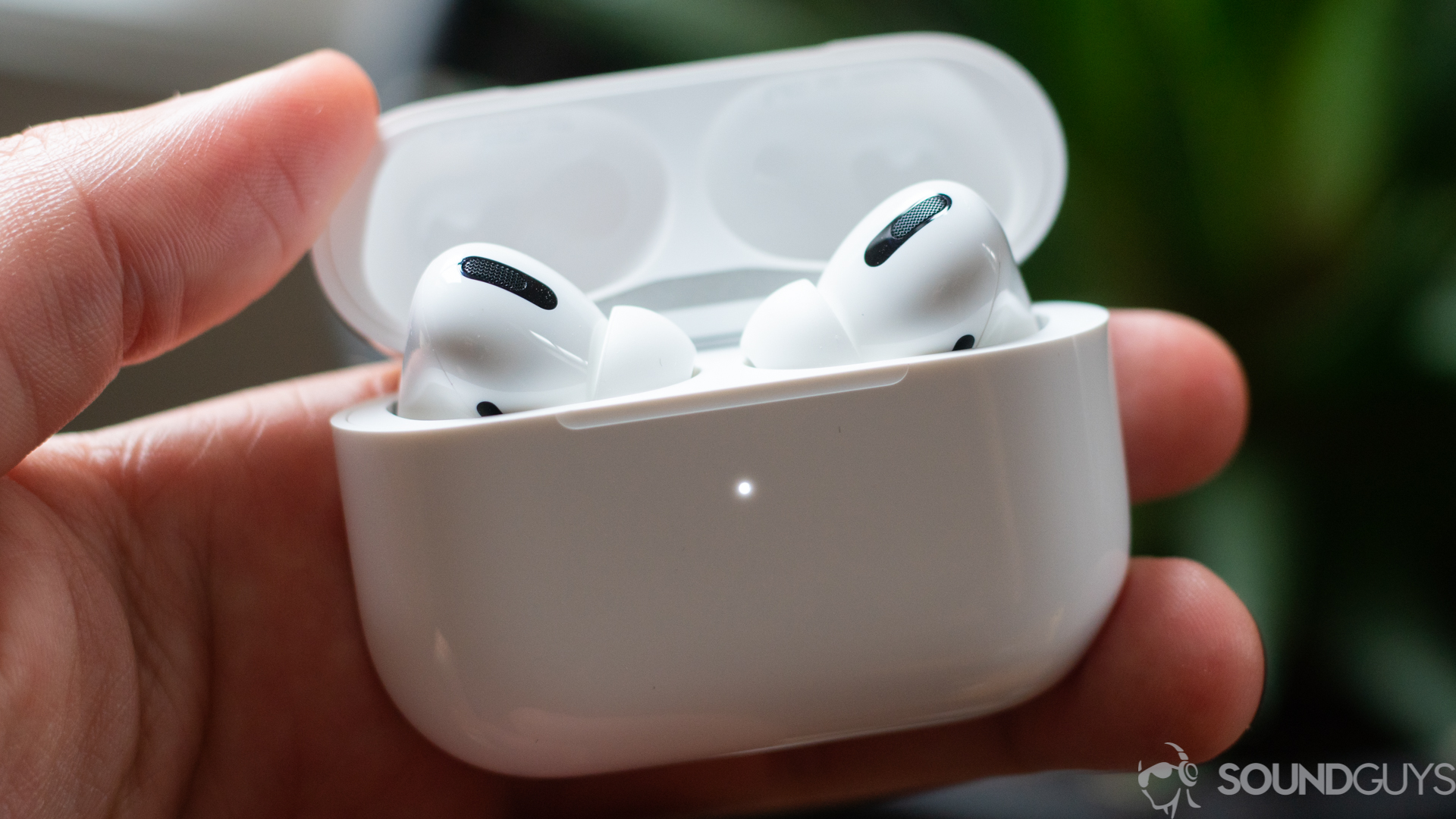
This one’s pretty easy to measure. We subjected each pair of earbuds to a constant 75dB(SPL) output via an iOS device and compared the results. The AirPods (2nd generation) afford 4 hours, 7 minutes of playback, while the AirPods Pro lasts for 5 hours, 7 minutes with noise canceling on. We ensured that both Bluetooth headsets streamed over the AAC codec.
No matter which pair of earbuds you buy, the charging case allows for 24 hours of combined playback and charges via Lightning cable. Both AirPods units support quick charging. The older model supplies 180 minutes of playback from 15 minutes of charging, while the AirPods Pro supplies 60 minutes of playback from 5 minutes of charging. This is the same; Apple just decided to change its wording on the official specifications page.
Apple AirPods Pro vs AirPods: Noise canceling and isolation
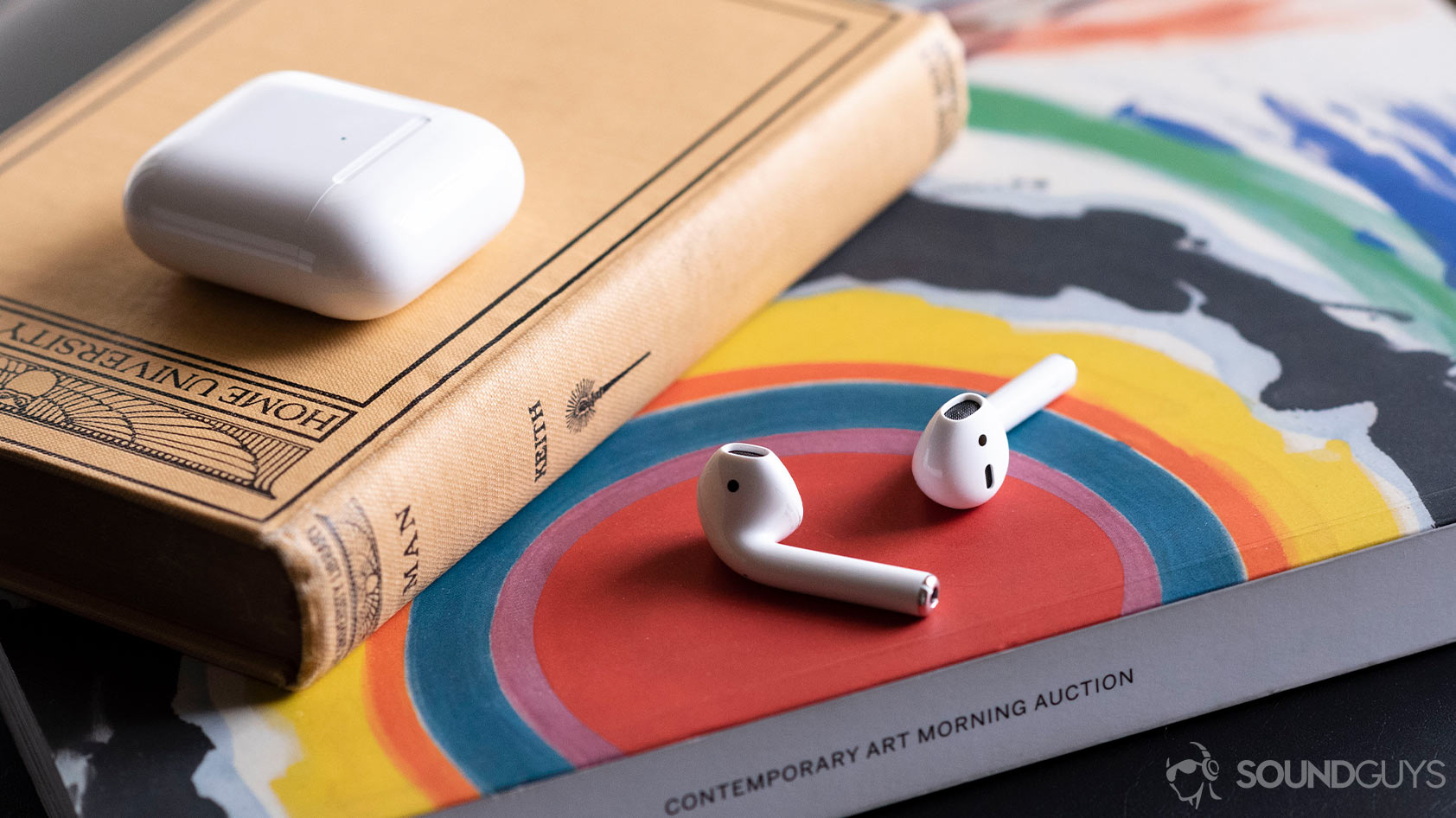
The first and second-generation AirPods’ isolation properties are hardly measurable because of the lacking seal. However, the AirPods Pro noise canceling tells a different story. The AirPods Pro effectively attenuates low and high-frequency sounds, making it easier to enjoy your music without distraction.
In the charts above, the higher up the pink line, the more passive isolation occurs from the physical barriers the earbuds create between the environment and your ear canals. Only the AirPods Pro chart has a cyan line indicating active noise canceling attenuation, which is most effective at blocking predictable, low-frequency sounds. You can toggle between three listening modes: noise canceling, off, and transparency when you squeeze the stems. Transparency mode lets outside noise in, so you can respond to a train ticketer or temporarily be aware of your surroundings.
Which AirPods has better sound quality?
Now that we’ve broken down the glaring differences between the two AirPods models, let’s dig into sound quality. Although the second-generation’s price reduction makes it more appealing than ever, both the AirPods (2nd gen) and AirPods Pro remain fairly expensive even for premium wireless earbuds. As long as you’re paying, you should get something that sounds good.
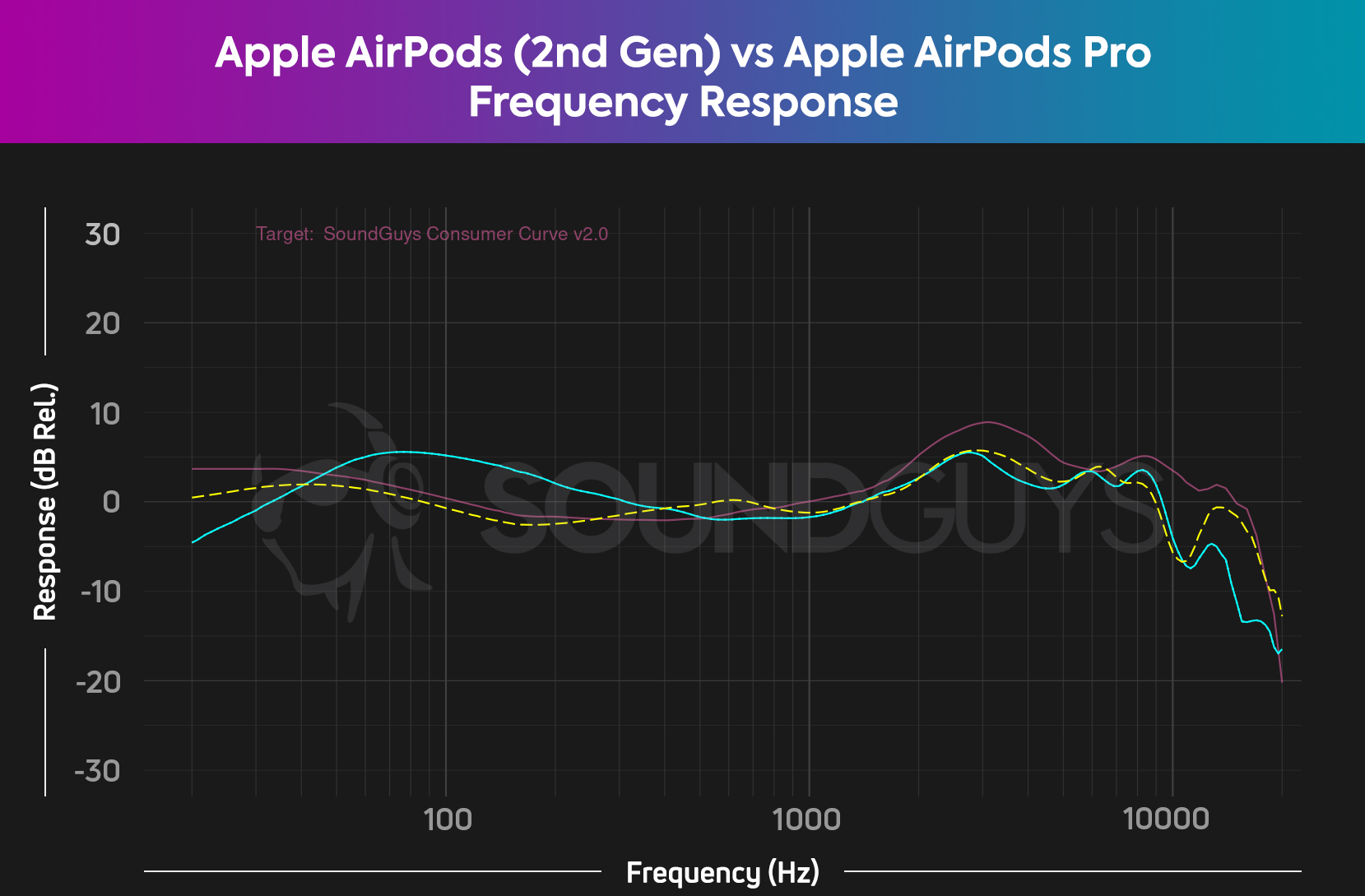
The chart above depicts the frequency responses of both pairs of earbuds, and the AirPods Pro has a more neutral-leaning bass response. This more consistent sound profile is a direct result of the new fit: the AirPods Pro seals to the ear and doesn’t have to rely on an emphasized bass response to compete with outside noise. The AirPods (2nd generation) has the objectively more exaggerated low-end, but this was measured in a controlled setting. The moment you step onto a train platform, bass notes become masked by louder external noises. Basically, if the fit is too loose you’ll lose all your low end.
Don’t miss: Apple Music vs Spotify Premium
Is the AirPods (2nd gen) or AirPods Pro better for phone calls?
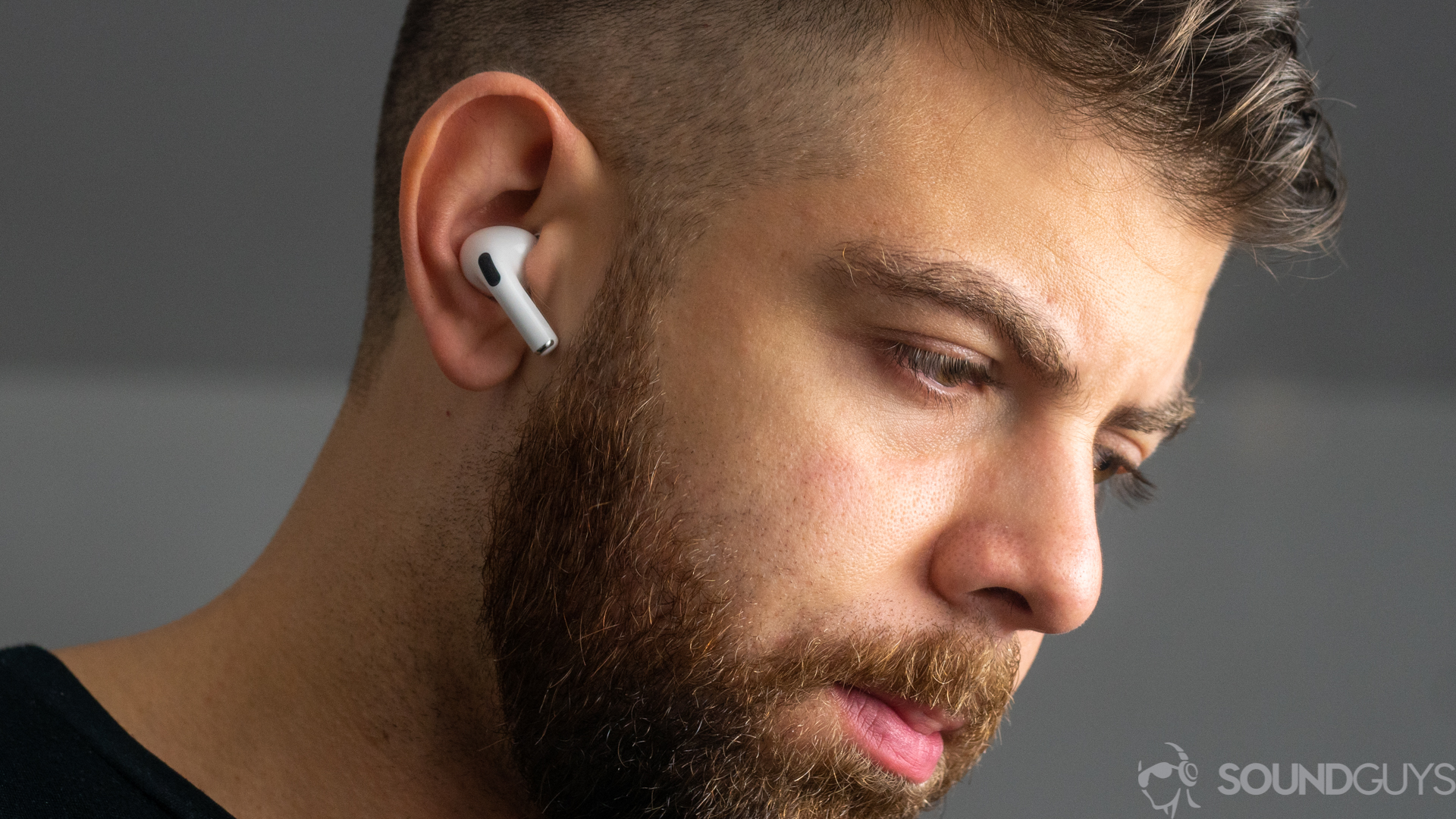
The AirPods (2nd generation) has a decent microphone unit that outperforms most of its competitors, thanks to the sensors and accelerometers packed into the housings in ideal settings. In windy or noisy conditions it tends to struggle.
Apple further improved this technology and the microphones’ frequency response with the AirPods Pro, however, it also can repeat some of the weaknesses of the AirPods (2nd generation) with filtering out too much sound (including your voice), or not enough.
Listen for yourself and let us know what you think.
Apple AirPods Pro (ideal) microphone demo:
Apple AirPods Pro (street) microphone demo:
Apple AirPods Pro (wind) microphone demo:
Apple AirPods (ideal) microphone demo:
Apple AirPods (street) microphone demo:
Apple AirPods (wind) microphone demo:
Which do you think sounds better?
Apple AirPods Pro vs Apple AirPods: What should you get?
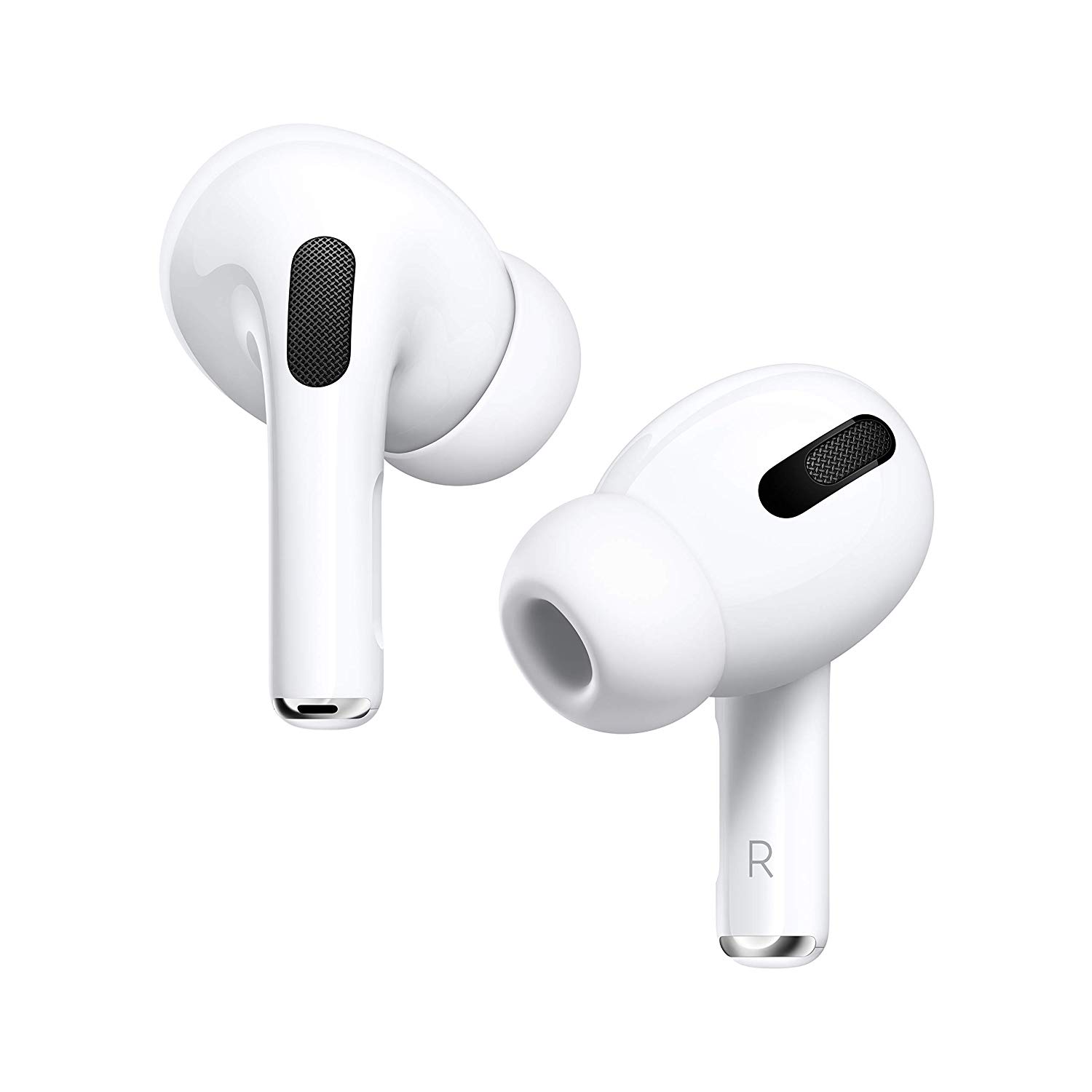
In case you haven’t been keeping score, the Apple AirPods Pro wins this head-to-head. If you’re an iPhone user, it’s well worth it to save up for the AirPods Pro as opposed to settling for the AirPods to save a buck. The AirPods Pro makes it extremely easy to pair with iOS devices, and if you have an Android phone, the process is easy enough still. Subjective preference matters too, and if you think noise canceling is a frivolity, there are plenty of wireless AirPods alternatives, including the Beats Powerbeats Pro.
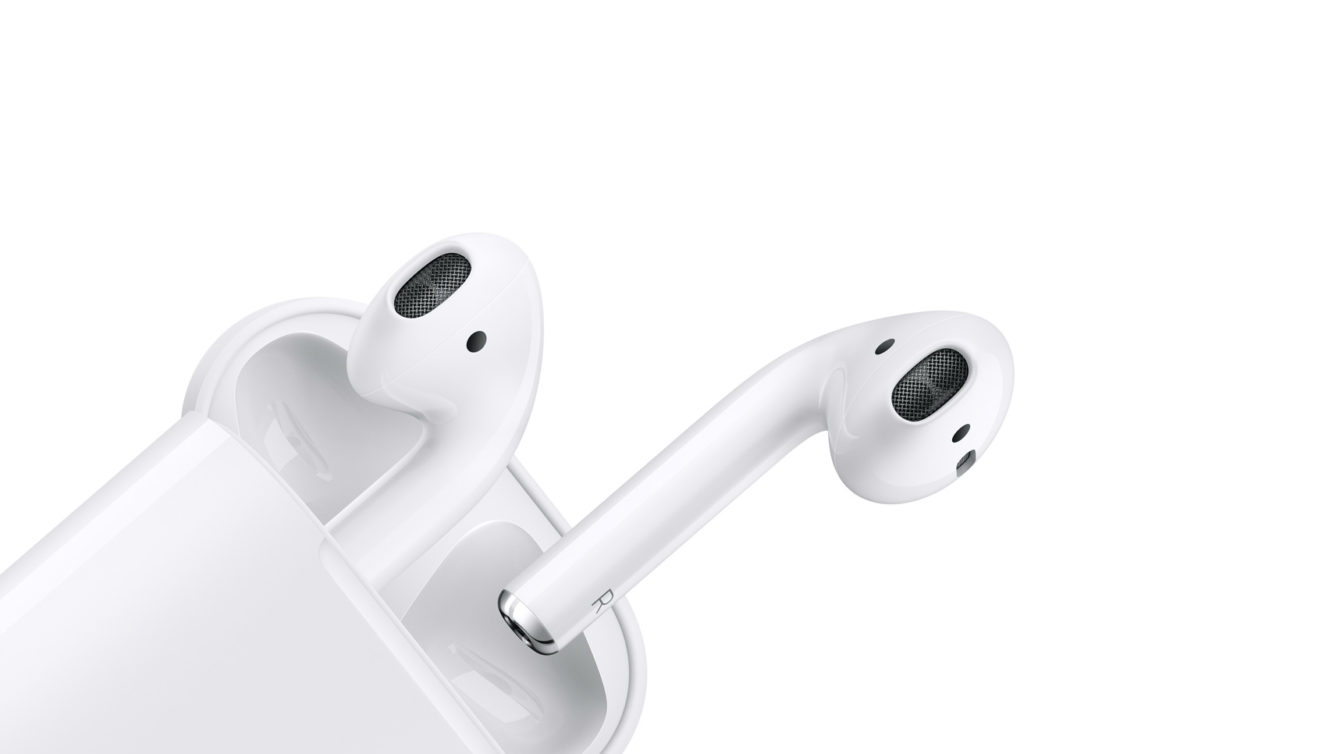
What about the Apple AirPods Max?
What happens if you take the AirPods Pro and transform them into a pair of on-ear headphones? You get the Apple AirPods Max. In typical Apple fashion, these headphones feature a bold new design, including a mesh knit canopy headband, stainless steel frame, and ear cups that are essentially inspired by the design of the Apple Watch. This aesthetic certainly is unconventional, but Apple claims that the AirPods Max was designed this way to balance comfort with acoustic performance.
The highlight feature of the AirPods Max is its active noise cancellation, which employs a similar hybrid noise canceling system found on the AirPods Pro. Three outward-facing microphones work to attenuate ambient noise, while one inward-facing mic is used to combat inner-ear resonances. Apple’s noise canceling outperforms the Sony WH-1000XM4 and Bose Noise Canceling Headphones 700.
See: Apple AirPods Max vs Bose Noise Canceling Headphones 700
The AirPods Max also offers several features previously introduced with the AirPods Pro, including Transparency Mode, Adaptive EQ, and Spatial Audio. The headphones also boast a 20-hour battery life, and can provide 90 minutes of playtime after just 5 minutes of charging.
What about the AirPods (3rd generation)?
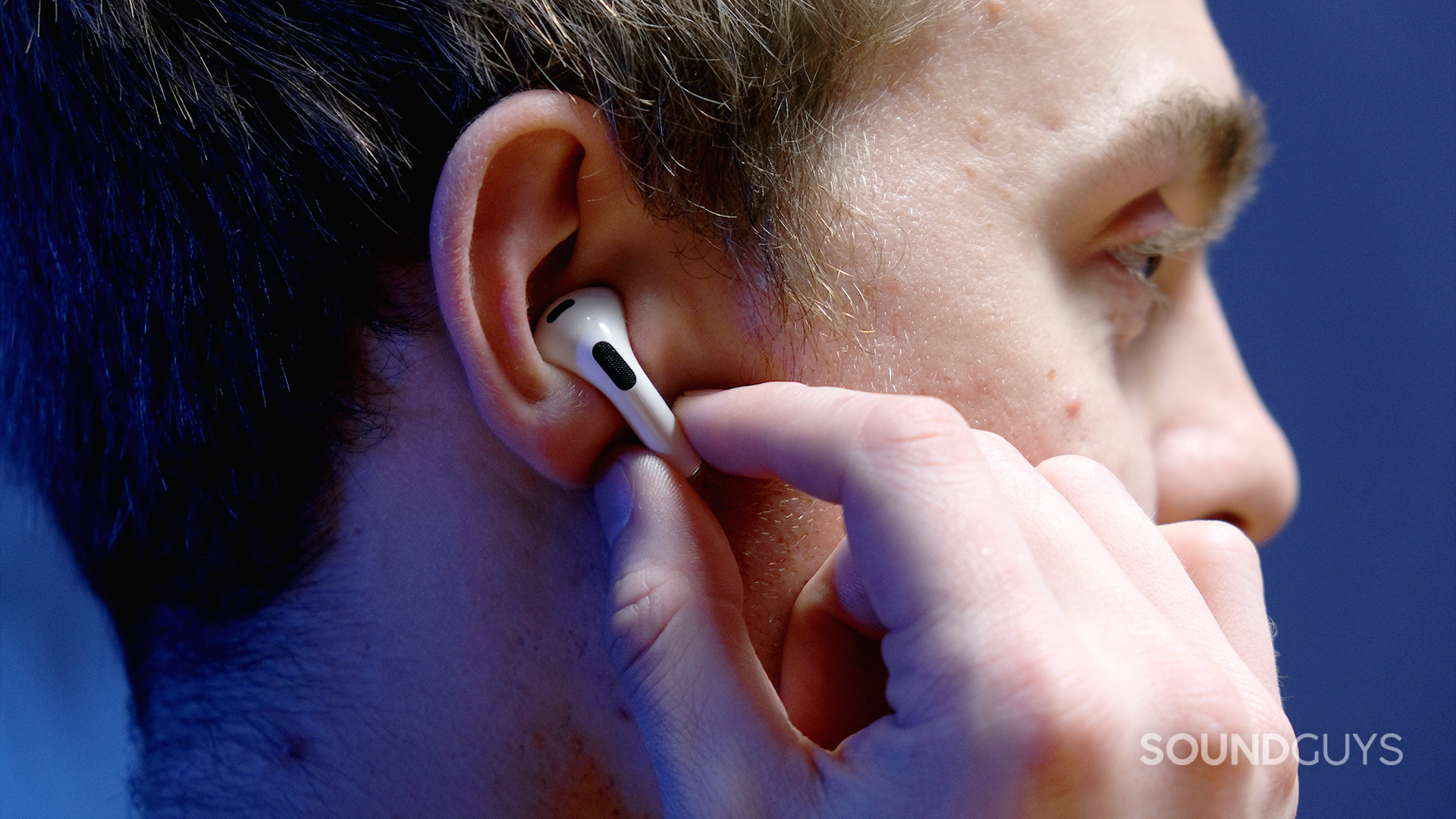
The very newest of the AirPods lineup offers some additional features missing from the AirPods (2nd generation). You now get the inclusion of spatial audio (also available on the AirPods Pro), as well as a spatialize stereo feature. In addition, the AirPods (3rd generation) sound quality has been improved over its predecessor, though, you’re still stuck with an open seal fit. That open seal fit stays in a little better than the previous iteration too, and the drivers have been tuned to accommodate for the poor fit. We’d still like to see ear tips to keep the buds locked in, but the AirPods (3rd generation) with its IPX4 rating is still a better all-around product than the last generation.
Is it better than the AirPods Pro? Mostly, no, but we live in the real world and recognize the AirPods Pro costs more. One upshot of these improvements is that some retailers have dropped major discounts on the AirPods (2nd generation). So if you’re ready to settle for fine and not perfect, maybe you’ll snag a set on sale.
Frequently asked questions about the AirPods Pro and AirPods (2nd generation)
No, none of the Apple AirPods support Bluetooth multipoint. However, you can take advantage of automatic device switching between Apple hardware under the same iCloud account. This means when you’re listening to music on your iPhone and start playing a video on your MacBook, the AirPods (3rd generation) will stop playing from your phone and immediately switch to the laptop’s audio output.
Make sure you clean your AirPods first to make sure there isn’t a debris buildup causing the volume difference. After this, if you’re still experiencing issues, test out other pairs of headphones to make sure the volume difference is caused by the AirPods and not a result of hearing damage or a faulty source device. If the problem is definitely with the AirPods, we would recommend either contacting Apple customer support for a replacement. If you don’t feel like going through the trouble of contacting customer support, try going into your source device’s accessibility settings and setting the volume slider more to the side of the AirPod that is quieter. This should balance out the relative proportions of volume coming through each earbud.
Honestly, no. You can find so many pairs of true wireless earbuds cheaper than the Apple AirPods that actually have passive isolation. The Apple AirPods Pro, however, are still an excellent buy in 2021 because they are some of the best active noise canceling earbuds you can find.
Yes! The Apple AirPods are on sale for $129 on Amazon.